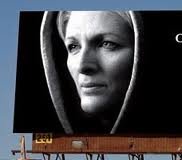I've been trying to dissect the look and it seems to me that there are a few common things. Film type doesn't seem to be one of them.
Strong blacks and strong whites in close/intermingled proximity.
Shorter scale subjects.
Kieth's moonflower is a good example.
http://s25.photobucket.com/albums/c76/keithwms/?action=view¤t=moonflower_macro_bw.jpg
The texture of the subject seems to be very important in intermingling the black and white.
Bringing the lighting across the subject at a significant angle, in this case high and left, allows the texture to pop more than say using a ring light would. The lighting is fairly soft/diffuse but still directional, no knife edge shadows.
In Kieth's example there is no hint, that I see, of over or even extra exposure, nor do I see any need for it. The last thing I'd want here is the background competing with the flower for attention or the highlights starting to compress.
The flower petal is a short scale subject so when printing, the whole photo can be printed with stronger blacks without sacrificing strong whites. Come to think of it, I can't remember seeing any long scale subjects with this effect.















